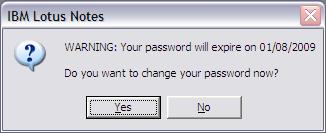I wanted to share a facilitation technique that’s worked well for me in a couple of different scenarios. It’s similar to a Futurespective, or the Innovation Game “Remember the Future”.
Like a Futurespective I ask the participants to put themselves forward in time, to a time after the project has completed and the new application (or whatever) is live and in use. Rather than looking back at the project and identifying successes and challenges I ask the participants to consider conversations with key stakeholders. In the first instance I ask them to imagine the best case scenario where everything has worked perfectly, delivery has been on time and the functionality meets or exceeds the end-users’ expectations. “What would you like to be told?” I ask them, “Or overhear at the watercooler”. On separate stickies (big ones preferably) I ask them to write down a particular sound bite or quote that sums up the response they want to get. I then repeat the exercise but ask for a worst case scenario.
The first time I ran this exercise I did it with a very dynamic, creative CEO who had a vision for a new version of his company’s core software application. Like a lot of dynamic, creative people he was brimming with ideas but it was hard for us to understand what were his priorities and what was the big picture. In this exercise I asked him to imagine conversations with his key external stakeholder, with his CFO and overhearing comments from people who use the application. We wrote up the quotes on big flipchart sheets and I thought the results were really interesting. From the exercise we got a clear expression of what our business sponsor thought his success would look like. Without asking him “What are you critical success factors” we got a pretty good view of what he (subconsciously?) considered success in terms of delivery time, cost/benefit and even user experience. We could use these quotes to plan our work diving into the roadmap and the backlog by considering “How will X help our CFO say Y”.
I tried the technique again in a very different environment.This time I was facilitating a meeting of a group of managers who were kicking off a new initiative across multiple teams. I wanted to use the exercise to start building a common understanding between the members of the management team of what they considered was expected of them and what they felt were their main challenges. So we identified some stakeholders at all levels and again did the best-case-scenario, worst-case-scenario quotes. We then made an affinity diagram for each stakeholder, grouping together quotes that seemed to be related. After that I asked all the participants to look at the quotes and the groupings and write on a different coloured sticky what thought or word each quote brought to mind. In other words what would be going right or wrong to make someone say that. This gave us the material for further discussion as a group and allowed all the participants to see and hear what their colleagues thought was significant.
I’m definitely a fan of this as an approach, either as a way of clarifying one person’s vision and expectations or getting a group of people to share their own assumptions about a project.





